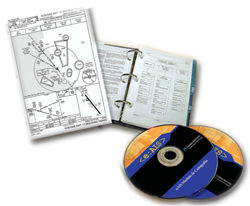
One of the steps in preflight planning is obtaining the latest NOTAMs and weather reports for the route and destinations you intend to use and fly into. This can be done below, and for those of you flying in hot and or high locations we have included pressure and density altitude calculators to get an idea about these conditions and the performance of your aircraft.
NOTAMs are last minute up-to-date AIP/AIS changes and all pilots need to familiarize themselves with them before the flight commences. See to it that you not only get NOTAMs for the departure, destination and diversion airports but also for the airspaces you intend to cross. Every now and then parts of the airspace are being closed due to safety or for other reasons.
METARs and TAFs are current and forecast weather reports. SIGMET and AIRMETs are meteorological significant bulletins important for pilots. It is important to keep in mind that not all airports have meteorological services to generate these or even report to the Aviation Digital Data Service (ADDS). Larger regional and international airports usually do. If there is none for your destination you may interpolate data from stations around the area. A phone call to weather services or your destination is also advisable to get the latest information.
The NOTAMs and METAR/TAFs reports are obtained from the DINS and ADDS offices. Data is live and current but subject to delays not under any control by us. Both sources can and will be offline every now and then. In that case you will see an error message of some sort appear in the window, just try again later. Some alternatives areSkyVector(includes wind vectors) or1-800-WX-BRIEF maps, these also have a live METAR and TAF feed visually on the map page.
Enter either one ICAO airport ID or a comma separated list of ID's, then select Raw or Report type and press 'View NOTAMs'. The reset button clears the form to its default values.
NOTAMs are written in a form of shorthand, the next link provides you with a guide on how todecode NOTAMs.在欧盟的交互式地图航行通告rope, see thisnotaminfo.comwebsite.
To retrieve the weather: just enter any valid airport ICAO ID, make your choice in options and then press the button 'Get METAR/TAF' and the report will be shown in a separate window.
ICAO ID, Enter the ICAO codes for the airports you desire.Raw or Translated, Select one to see the report in raw or human readable format. Next theMETARs / TAFscheckbox, both reports can be requested at the same time. Thepast 4 hoursdropbox lets us choose any METAR up to 36 hours in the past.
Pressure and density altitudes are calculated from current meteorological data and used to obtain the performance numbers for your aircraft in relation to landing, takeoff distance required and cruise data. This is part of the job of the pilot and is required prior to each flight.
Now that you have the latest weather, enter the required values below and press'Calculate'to obtain Pressure and Density altitude. The actual pressure lapse rate and ISA temp at your pressure altitude will be taken into account by the calculator.
This calculator is based on the following formulas and constants:
Pressure Lapse Rate = 96 × ( T in Kelvin) / QNH,
Pressure Altitude = Altitude + (1013 - QNH) × PLR,
Density Altitude = Pressure Altitude + (OAT - ISATpa) × 120
where: ISA QNH is 1013 hPa, Temp is 15 °C at sea level and Celsius to Kelvin differs with 273 °C.
To learn more about the performance of your aircraft, see the next link oneffects of air density.
This is important knowledge should you regularly fly in hot and high conditions, from short fields and or in mountain areas! As your engine and aircraft depends heavily on these factors and people have crashed due to this.
For those of you wishing to look further ahead than a day or three (although, weather reports will become less reliable), we have detailed forecast weather charts and satellite images from different sources available on our site: the next link will get you toour weather pages.On those pages you will find an overview of global weather and detailed pages with regional weather.
Once upon a time we could use the Jeppesen Text Weather service, the next link once took you there:Jeppesen World Wide Weather.This will open a small window where you even could request PIREPs and temperature/ wind aloft reports, very handy for selecting the most favorable altitude (tail wind) to fly to your destination.
Note 2019: This service does not exists anymore, sadly enough.